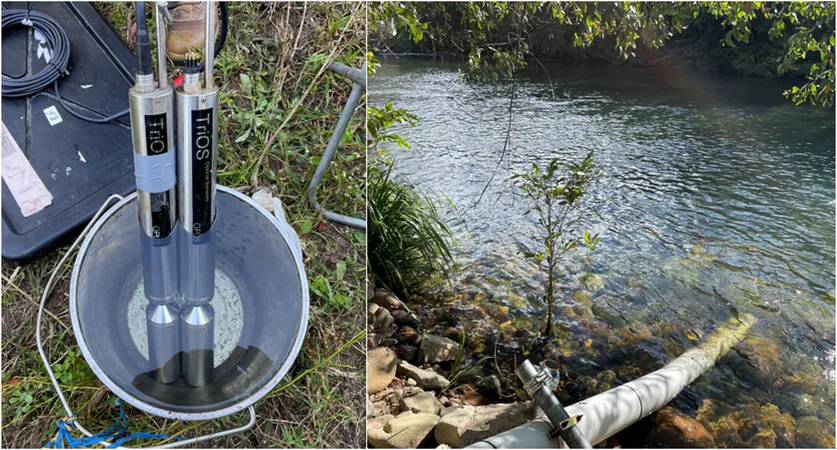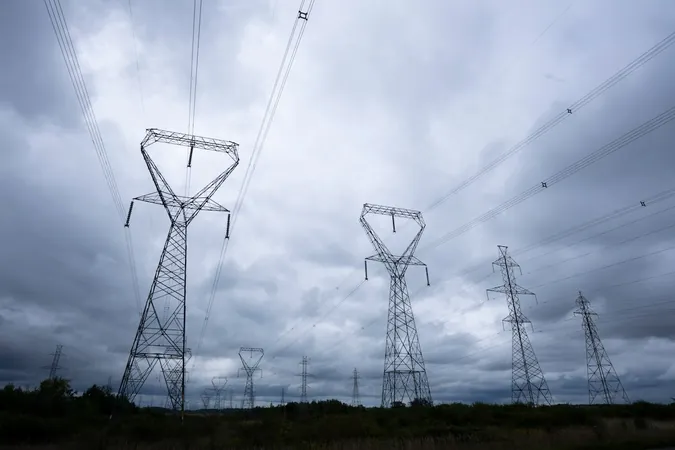
Revolutionary Water Quality Monitoring Technique Set to Safeguard the Great Barrier Reef
2024-11-08
Author: William
Introduction
In a groundbreaking development, data scientists from Queensland University of Technology (QUT) have unveiled a sophisticated statistical method aimed at revolutionizing the monitoring of water quality in the streams and rivers that feed into the Great Barrier Reef. This pivotal research, published in the esteemed journal Water Resources Research, addresses a pressing environmental issue that threatens one of the world’s most iconic ecosystems.
The Challenge of Water Quality Monitoring
Dr. Edgar Santos-Fernandez, the lead author and expert from QUT's School of Mathematical Sciences, emphasized the growing challenges posed by land runoff that introduces harmful pollutants such as fine sediments, excess nutrients, and pesticides into the waterways. These contaminants severely threaten the reef's ecological balance and biodiversity.
"Our current water-quality sensors may provide near real-time data; however, they are often hampered by technical glitches," Dr. Santos-Fernandez explained. "Interferences from natural elements like rocks, organic debris, or even aquatic life can obscure the sensor’s readings."
Innovative Monitoring System
To tackle this formidable challenge, the research team has pioneered a dynamic monitoring system that continuously detects and rectifies anomalies in sensor data, thus enhancing data reliability and accuracy. Distinguished Professor Kerrie Mengersen, who leads QUT's Center for Data Science and oversees this research, noted that as global water quality challenges escalate, innovative solutions like this are critical.
"This innovative approach provides an essential resource for both scientists and policymakers, enabling them to make more informed decisions regarding our precious water resources," Professor Mengersen stated.
Advanced Analytical Techniques
One of the standout features of this newfound method is its ability to analyze patterns across different times and locations. Dr. Santos-Fernandez highlighted its effectiveness in distinguishing between actual changes in water quality and mere sensor malfunctions.
"We utilize spatial and temporal autocorrelation techniques to significantly enhance anomaly detection rates," he said, explaining how the system functions. "By conducting a rigorous comparison of various advanced statistical approaches, we created a new framework that adapts continuously as fresh data becomes available."
Real-World Impact
The implications of this research are enormous. Through simulations and real-world investigations on Queensland's Herbert River—an important tributary to the Great Barrier Reef—the research team confirmed that their innovative technique greatly improves the reliability of water-quality reporting.
The potential ramifications of this enhanced accuracy are far-reaching, promising more effective and efficient water management strategies. As the Great Barrier Reef continues to face existential threats, this novel monitoring system could serve as a critical tool in the fight to preserve its health and integrity for future generations.
Conclusion
Stay tuned for more updates on this pivotal research that may very well hold the key to saving the Great Barrier Reef!









 Brasil (PT)
Brasil (PT)
 Canada (EN)
Canada (EN)
 Chile (ES)
Chile (ES)
 Česko (CS)
Česko (CS)
 대한민국 (KO)
대한민국 (KO)
 España (ES)
España (ES)
 France (FR)
France (FR)
 Hong Kong (EN)
Hong Kong (EN)
 Italia (IT)
Italia (IT)
 日本 (JA)
日本 (JA)
 Magyarország (HU)
Magyarország (HU)
 Norge (NO)
Norge (NO)
 Polska (PL)
Polska (PL)
 Schweiz (DE)
Schweiz (DE)
 Singapore (EN)
Singapore (EN)
 Sverige (SV)
Sverige (SV)
 Suomi (FI)
Suomi (FI)
 Türkiye (TR)
Türkiye (TR)
 الإمارات العربية المتحدة (AR)
الإمارات العربية المتحدة (AR)